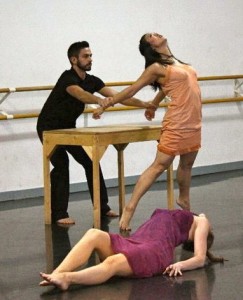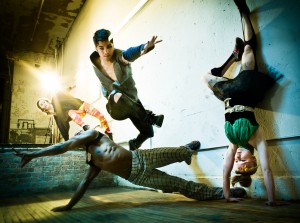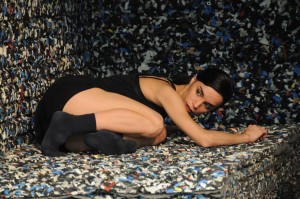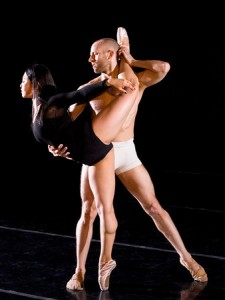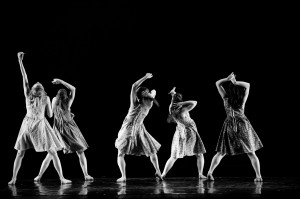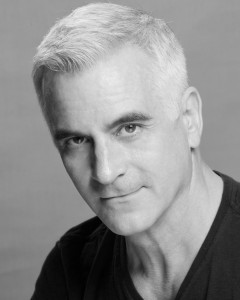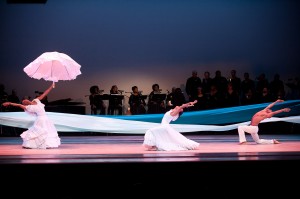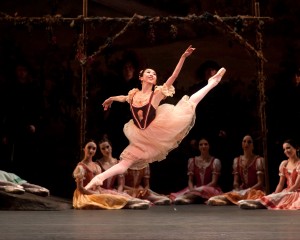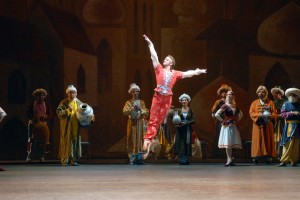For the third year, Cerqua Rivera Dance Theatre (CRDT) presents an intimate show of in-house choreography and musical compositions at the Hubbard Street Dance Center. New Works 2012 features eight artistic collaborations with CRDT musicians, dancers, choreographers (and one guest choreographer) and two musical pieces. The three-hour event will also include a reception with a silent auction CRDT founding member, artist Matt Lamb’s work, who passed away this year. The dances will all be revised and performed in CRDT’s annual Fall Concert. Artistic Director Wilfredo Rivera and Producing Director Joe Cerqua team up again for two pieces on dreams – a romantic duet Dreaming of Home and De Suenos Y Deseos (Of Dreams and Desires) exploring those dreams we have when we’re half asleep. Via email, Rivera tells me about the process of New Works. “CRDT develops works more like a theater. We work as a team developing ideas for a piece. Sometimes the idea comes from a choreographer and/or composer. It’s my job to ‘team’ folks accordingly.” Other choreographers include CRDT Rehearsal Director/dancer Raphaellle Ziemba, dancer Josh Pawelk, guest choreographer Mei-Kuang Chen and Benjamin Marshall a student at the Chicago High School for the Arts (CHIARTS).
Being a political junkie, I was immediately drawn to Pawelk’s work which includes a soundscape designed by CRDT Musical Director Stu Greenspan featuring Robert F. Kennedy’s post MLK assassination speech, The Mindless Menace of Violence, and quotes from President Obama’s 2008 race speech A More Perfect Union. Dance, politics and Obama? That’s like crack to me. I corresponded with Pawelk, a four-year veteran of CRDT, via email from his home in Delano, Minnesota about his work 40 Years Later (originally created for New Works 2011 and for CRDT’s Jubilation Concert celebrating black history month).
Why did you want to make a piece with political themes?
When Wilfredo came and asked me if I would like to set a piece on the company, I wanted to create a piece that they could put in their repertoire that would breathe some new life and new perspective for their Jubilation Concerts. I know and understand that black history is our history too, but to have a piece that is driven from a white person’s perspective that has so much power and thought and concern for everyone’s life in our country who lived through that tough and troublesome time in our nation’s history.
Why did you want to use RFK’s speech?
In 2006, there was a major motion picture titled “Bobby” that was released. It was about the assassination of Bobby at the Ambassador Hotel and how it affected the lives of 22 people who were in the hotel that day. Towards the end of the movie, they have his speech playing as you see a montage of the devastation and sadness that people felt because of the tragic loss of his life. Watching that while hearing his brilliantly spoken words struck a chord in me. I was so moved by it I wanted to combine the emotional movement I felt with physical movement.
When did you decide to include comments from President Obama?
It was actually Stu’s idea to include the comments Obama made in his speech to illustrate how that even 40 years after Bobby gave his speech, we as people are still facing the same social issues in our country today.
Did you come up with the concept first and then ask him to do the sound design?
I did come up with the concept first of wanting to use only Bobby’s speech because even though it’s just his spoken word, I hear a definite rhythm and flow in the way he delivered that speech. I had suggest to Stu that the music I was thinking for in the background be something light and ominous so it wouldn’t take away from the rhythm in his speech. Stu came up with the idea of using Curtis Mayfield’s song “Hard times” in the background. Since it was going to be a rep piece for the Jubilation Concert it was important for him to use a track by an African American musician who was around during that time period with music that definitely reflects the sign of the times.
Did you go into the studio with just the idea or did you set the choreography first?
The majority of all the pieces I create starts with a concept. When the concept, the music and the emotion are all figured out, I go into the studio and allow myself to surrender to the piece completely, letting the music and the story behind it to move me.
Cerqua Rivera Dance Theatre presents New Works 2012 at the Hubbard Street Dance Center, 1147 W. Jackson Blvd on Saturday, June 23rd at 6 pm. Tickets are $20 ($50 tickets will benefit the CRDT Youth Programs). Reservations are required. Call 312.243.9310 or email crdtoffice@comcast.net.

